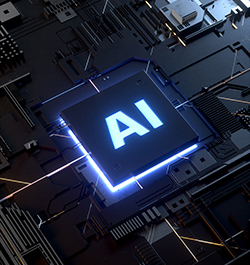Unlocking ROI with GenAI: A Guide to Leveraging Enterprise Data and Ensuring Scalability
By: Volkmar Uhlig

Generative artificial intelligence (GenAI) is reshaping industries worldwide, driven by significant advancements in models such as OpenAI’s ChatGPT. This transformation offers businesses the potential for increased productivity, reduced operational costs, and streamlined workflows. However, with these benefits come complex challenges, especially concerning data privacy, security, and compliance with industry regulations. As companies adopt GenAI, they must proactively address these risks by establishing robust policies designed to securely integrate AI technologies into existing systems and processes.
Leveraging Proprietary Data for Maximum ROI
For organizations aiming to maximize GenAI’s return on investment (ROI), effectively utilizing proprietary data is essential. With the right approach, companies can tap into their unique data assets to improve model performance and produce results aligned with specific business goals. Two primary methods, Retrieval Augmented Generation (RAG) and fine-tuning models, are particularly effective for this purpose.
RAG works by supplementing the outputs of a large language model with business-specific datasets, creating responses that reflect specialized knowledge and industry nuances. This technique enables the GenAI model to reference proprietary information, allowing it to produce more informed and accurate results in response to user queries. While fine-tuning involves adjusting a pre-existing model to align more closely with proprietary insights and organizational needs. This method can be especially useful for organizations with highly specialized terminology or industry-specific requirements. By customizing a model with company data, businesses can ensure more tailored and precise outputs that resonate with their brand voice and meet specific functional demands.
Both approaches hinge on having well-curated, high-quality data resources. Without reliable data, the effectiveness of GenAI decreases, as it becomes more prone to generating inaccurate or irrelevant responses. For companies investing in GenAI, building and maintaining strong data management practices is paramount.
Key Phases of Enterprise AI Implementation
Implementing GenAI within an organization typically follows a five-phase approach. Each phase reflects a progressive commitment to GenAI, with corresponding shifts in complexity and customization. The five stages are as follows:



















